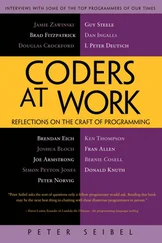Peter Siebel - Practical Common Lisp
Здесь есть возможность читать онлайн «Peter Siebel - Practical Common Lisp» весь текст электронной книги совершенно бесплатно (целиком полную версию без сокращений). В некоторых случаях можно слушать аудио, скачать через торрент в формате fb2 и присутствует краткое содержание. Год выпуска: 2005, ISBN: 2005, Издательство: Apress, Жанр: Программирование, на английском языке. Описание произведения, (предисловие) а так же отзывы посетителей доступны на портале библиотеки ЛибКат.
- Название:Practical Common Lisp
- Автор:
- Издательство:Apress
- Жанр:
- Год:2005
- ISBN:1-59059-239-5
- Рейтинг книги:4 / 5. Голосов: 1
-
Избранное:Добавить в избранное
- Отзывы:
-
Ваша оценка:
- 80
- 1
- 2
- 3
- 4
- 5
Practical Common Lisp: краткое содержание, описание и аннотация
Предлагаем к чтению аннотацию, описание, краткое содержание или предисловие (зависит от того, что написал сам автор книги «Practical Common Lisp»). Если вы не нашли необходимую информацию о книге — напишите в комментариях, мы постараемся отыскать её.
Practical Common Lisp — читать онлайн бесплатно полную книгу (весь текст) целиком
Ниже представлен текст книги, разбитый по страницам. Система сохранения места последней прочитанной страницы, позволяет с удобством читать онлайн бесплатно книгу «Practical Common Lisp», без необходимости каждый раз заново искать на чём Вы остановились. Поставьте закладку, и сможете в любой момент перейти на страницу, на которой закончили чтение.
Интервал:
Закладка:
Consequently, a Common Lisp program tends to provide a much clearer mapping between your ideas about how the program works and the code you actually write. Your ideas aren't obscured by boilerplate code and endlessly repeated idioms. This makes your code easier to maintain because you don't have to wade through reams of code every time you need to make a change. Even systemic changes to a program's behavior can often be achieved with relatively small changes to the actual code. This also means you'll develop code more quickly; there's less code to write, and you don't waste time thrashing around trying to find a clean way to express yourself within the limitations of the language. [2] Unfortunately, there's little actual research on the productivity of different languages. One report that shows Lisp coming out well compared to C++ and Java in the combination of programmer and program efficiency is discussed at http://www.norvig.com/java-lisp.html .
Common Lisp is also an excellent language for exploratory programming—if you don't know exactly how your program is going to work when you first sit down to write it, Common Lisp provides several features to help you develop your code incrementally and interactively.
For starters, the interactive read-eval-print loop, which I'll introduce in the next chapter, lets you continually interact with your program as you develop it. Write a new function. Test it. Change it. Try a different approach. You never have to stop for a lengthy compilation cycle. [3] Psychologists have identified a state of mind called flow in which we're capable of incredible concentration and productivity. The importance of flow to programming has been recognized for nearly two decades since it was discussed in the classic book about human factors in programming Peopleware: Productive Projects and Teams by Tom DeMarco and Timothy Lister (Dorset House, 1987). The two key facts about flow are that it takes around 15 minutes to get into a state of flow and that even brief interruptions can break you right out of it, requiring another 15-minute immersion to reenter. DeMarco and Lister, like most subsequent authors, concerned themselves mostly with flow-destroying interruptions such as ringing telephones and inopportune visits from the boss. Less frequently considered but probably just as important to programmers are the interruptions caused by our tools. Languages that require, for instance, a lengthy compilation before you can try your latest code can be just as inimical to flow as a noisy phone or a nosy boss. So, one way to look at Lisp is as a language designed to keep you in a state of flow.
Other features that support a flowing, interactive programming style are Lisp's dynamic typing and the Common Lisp condition system. Because of the former, you spend less time convincing the compiler you should be allowed to run your code and more time actually running it and working on it, [4] This point is bound to be somewhat controversial, at least with some folks. Static versus dynamic typing is one of the classic religious wars in programming. If you're coming from C++ and Java (or from statically typed functional languages such as Haskel and ML) and refuse to consider living without static type checks, you might as well put this book down now. However, before you do, you might first want to check out what self-described "statically typed bigot" Robert Martin (author of Designing Object Oriented C++ Applications Using the Booch Method [Prentice Hall, 1995]) and C++ and Java author Bruce Eckel (author of Thinking in C++ [Prentice Hall, 1995] and Thinking in Java [Prentice Hall, 1998]) have had to say about dynamic typing on their weblogs ( http://www.artima.com/weblogs/viewpost.jsp?thread=4639 and http://www.mindview.net/ WebLog/log-0025 ). On the other hand, folks coming from Smalltalk, Python, Perl, or Ruby should feel right at home with this aspect of Common Lisp.
and the latter lets you develop even your error handling code interactively.
Another consequence of being "a programmable programming language" is that Common Lisp, in addition to incorporating small changes that make particular programs easier to write, can easily adopt big new ideas about how programming languages should work. For instance, the original implementation of the Common Lisp Object System (CLOS), Common Lisp's powerful object system, was as a library written in portable Common Lisp. This allowed Lisp programmers to gain actual experience with the facilities it provided before it was officially incorporated into the language.
Whatever new paradigm comes down the pike next, it's extremely likely that Common Lisp will be able to absorb it without requiring any changes to the core language. For example, a Lisper has recently written a library, AspectL, that adds support for aspect-oriented programming (AOP) to Common Lisp. [5] AspectL is an interesting project insofar as AspectJ, its Java-based predecessor, was written by Gregor Kiczales, one of the designers of Common Lisp's object and metaobject systems. To many Lispers, AspectJ seems like Kiczales's attempt to backport his ideas from Common Lisp into Java. However, Pascal Costanza, the author of AspectL, thinks there are interesting ideas in AOP that could be useful in Common Lisp. Of course, the reason he's able to implement AspectL as a library is because of the incredible flexibility of the Common Lisp Meta Object Protocol Kiczales designed. To implement AspectJ, Kiczales had to write what was essentially a separate compiler that compiles a new language into Java source code. The AspectL project page is at http://common-lisp.net/project/aspectl/ .
If AOP turns out to be the next big thing, Common Lisp will be able to support it without any changes to the base language and without extra preprocessors and extra compilers. [6] Or to look at it another, more technically accurate, way, Common Lisp comes with a built-in facility for integrating compilers for embedded languages.
Where It Began
Common Lisp is the modern descendant of the Lisp language first conceived by John McCarthy in 1956. Lisp circa 1956 was designed for "symbolic data processing" [7] Lisp 1.5 Programmer's Manual (M.I.T. Press, 1962)
and derived its name from one of the things it was quite good at: LISt Processing. We've come a long way since then: Common Lisp sports as fine an array of modern data types as you can ask for: a condition system that, as you'll see in Chapter 19, provides a whole level of flexibility missing from the exception systems of languages such as Java, Python, and C++; powerful facilities for doing object-oriented programming; and several language facilities that just don't exist in other programming languages. How is this possible? What on Earth would provoke the evolution of such a well-equipped language?
Well, McCarthy was (and still is) an artificial intelligence (AI) researcher, and many of the features he built into his initial version of the language made it an excellent language for AI programming. During the AI boom of the 1980s, Lisp remained a favorite tool for programmers writing software to solve hard problems such as automated theorem proving, planning and scheduling, and computer vision. These were problems that required a lot of hard-to-write software; to make a dent in them, AI programmers needed a powerful language, and they grew Lisp into the language they needed. And the Cold War helped—as the Pentagon poured money into the Defense Advanced Research Projects Agency (DARPA), a lot of it went to folks working on problems such as large-scale battlefield simulations, automated planning, and natural language interfaces. These folks also used Lisp and continued pushing it to do what they needed.
Читать дальшеИнтервал:
Закладка:
Похожие книги на «Practical Common Lisp»
Представляем Вашему вниманию похожие книги на «Practical Common Lisp» списком для выбора. Мы отобрали схожую по названию и смыслу литературу в надежде предоставить читателям больше вариантов отыскать новые, интересные, ещё непрочитанные произведения.
Обсуждение, отзывы о книге «Practical Common Lisp» и просто собственные мнения читателей. Оставьте ваши комментарии, напишите, что Вы думаете о произведении, его смысле или главных героях. Укажите что конкретно понравилось, а что нет, и почему Вы так считаете.








